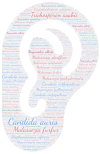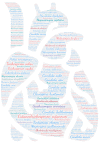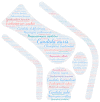A Repertoire of the Less Common Clinical Yeasts
- PMID: 37998905
- PMCID: PMC10671991
- DOI: 10.3390/jof9111099
A Repertoire of the Less Common Clinical Yeasts
Abstract
Invasive fungal diseases are a public health problem. They affect a constantly increasing number of at-risk patients, and their incidence has risen in recent years. These opportunistic infections are mainly due to Candida sp. but less common or rare yeast infections should not be underestimated. These so-called "less common" yeasts include Ascomycota of the genera Candida (excluding the five major Candida species), Magnusiomyces/Saprochaete, Malassezia, and Saccharomyces, and Basidiomycota of the genera Cryptococcus (excluding the Cryptococcus neoformans/gattii complex members), Rhodotorula, and Trichosporon. The aim of this review is to (i) inventory the less common yeasts isolated in humans, (ii) provide details regarding the specific anatomical locations where they have been detected and the clinical characteristics of the resulting infections, and (iii) provide an update on yeast taxonomy. Of the total of 239,890 fungal taxa and their associated synonyms sourced from the MycoBank and NCBI Taxonomy databases, we successfully identified 192 yeasts, including 127 Ascomycota and 65 Basidiomycota. This repertoire allows us to highlight rare yeasts and their tropism for certain anatomical sites and will provide an additional tool for diagnostic management.
Keywords: rare yeasts; repertoire; uncommon yeasts.
Conflict of interest statement
The authors declare no conflict of interest.
Figures













References
-
- Kurtzman C.P., Piškur J. Taxonomy and Phylogenetic Diversity among the Yeasts. In: Sunnerhagen P., Piskur J., editors. Comparative Genomics: Using Fungi as Models. Springer; Berlin/Heidelberg, Germany: 2006. pp. 29–46. Topics in Current Genetics.
-
- Segal-Kischinevzky C., Romero-Aguilar L., Alcaraz L.D., López-Ortiz G., Martínez-Castillo B., Torres-Ramírez N., Sandoval G., González J. Yeasts Inhabiting Extreme Environments and Their Biotechnological Applications. Microorganisms. 2022;10:794. doi: 10.3390/microorganisms10040794. - DOI - PMC - PubMed
-
- Kurtzman C.P., Fell J.W., Boekhout T., Robert V. Chapter 7—Methods for Isolation, Phenotypic Characterization and Maintenance of Yeasts. In: Kurtzman C.P., Fell J.W., Boekhout T., editors. The Yeasts. 5th ed. Elsevier; London, UK: 2011. pp. 87–110.
-
- Crous P.W., Gams W., Stalpers J.A., Robert V., Stegehuis G. MycoBank: An Online Initiative to Launch Mycology into the 21st Century. Stud. Mycol. 2004;50:19–22.
-
- Kurtzman C.P., Fell J.W. Yeast Systematics and Phylogeny—Implications of Molecular Identification Methods for Studies in Ecology. In: Péter G., Rosa C., editors. Biodiversity and Ecophysiology of Yeasts. Springer; Berlin/Heidelberg, Germany: 2006. pp. 11–30. The Yeast Handbook.
Publication types
LinkOut - more resources
Full Text Sources

